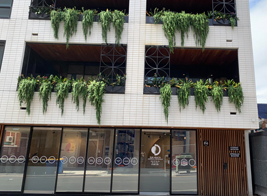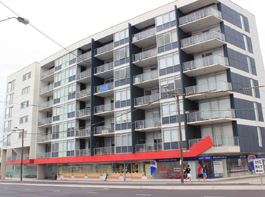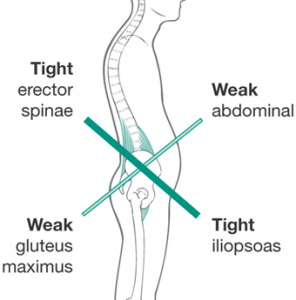Professional athletes and everyday recreational sportsmen are often out of action when injuries happen. Bracing and taping are great tools to assist recovery of the damaged structures, or to support movement in certain positions so we can continue to exercise. Some also use them as an injury prevention measure. There is an extensive variety of braces and many different taping techniques sports physios use. Let’s have a look at the pros and cons you know when to use either of these tools.
Bracing
Bracing is an external device applied to a joint by restricting movement and hence stabilising the joint. It comes in different sizes. A well-fitted brace can reduce pain by keeping the injured structures out of the painful range of motion. There are also different materials of braces available depending on the stability required: the fabric ones are softer, permitting more movement while the other ones are more rigid.
Pros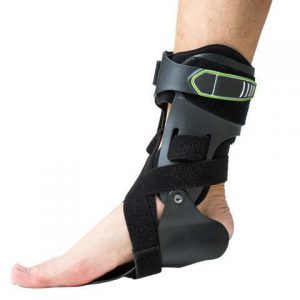
- Easy application and removal
- Re-usable and cost effective
- Provides significant support for return to play/ assist recovery/ pain relief
Cons
- Requires regular cleaning especially when being worn for long hours
- Bulky when compared to taping, especially for larger joints
- Long term application can result in muscle weakness when injured structures rely on braces for stability
Taping
There are broadly two types of tape that are widely used by sports physio: rigid and kinesio tape. Rigid tape, as the name suggests, enhances rigidity of joints. It stabilises joints by being applied to weakened injured structures such as a sprained ligament. Kinesiotape is stretchy and it facilitates muscle movement to rehabilitate for injuries.
Pros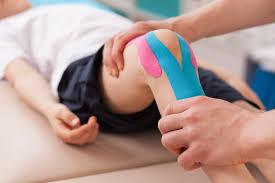
- Not as bulky as braces and is easier to move around/ play sports with
- Cheaper than braces
- No sizing required and gives very customised fit to provide optimal support when applied appropriately
- Kinesiotape tape can facilitate muscle activation
Cons
- Material and glue may irritate skin
- Needs frequent re-application if long term support is required
- Non-reusable therefore if required for long term can be costly
- Requires someone else (e.g. a sports physio) to apply for you (unless you have practised a dozen times although will still be awkward)
- Can be painful to remove and may leave glue marks (and hairless patches for the hairy ones)
If you suffer from any acute or old injuries and would like to explore the options of taping or bracing to get yourself active and moving, feel free to contact our friendly team at Capital Physiotherapy.
Our Physiotherapy Clinics in Melbourne
De quervain’s Tenosynovitis
De Qeuervain’s Tenosynovitis is a painful condition that affects the tendons on the side of your thumb and wrist. This condition affects two tendons (Abductor Pollicis Longus and the Extensor Pollicis brevis) that arises from your forearm. These two tendons are very close together and they pass through a structure called the synovium before inserting at the base of the thumb.
 This type of injury usually occurs due to several factors, one of which is repetitive movement. This can be seen when you use a mouse or a pen for a prolonged period of time, as well as the use of a screwdriver or hammering. Another common time this occurs is during and after pregnancies in women. This could be related to the lifting technique of the new born, as well as the usually quick gains in weight. This increase in pressure puts stress along the tendons, causing the pains.
This type of injury usually occurs due to several factors, one of which is repetitive movement. This can be seen when you use a mouse or a pen for a prolonged period of time, as well as the use of a screwdriver or hammering. Another common time this occurs is during and after pregnancies in women. This could be related to the lifting technique of the new born, as well as the usually quick gains in weight. This increase in pressure puts stress along the tendons, causing the pains.
Pain is generally quite general and achy in nature at the start. However, ongoing physical activity will result in the pain becoming sharper and localised on the side of your wrist (thumb side). Some swelling may also be observed.
It is imperative that you get your wrist looked after if you suspect a De Quervain’s Tenosynovitis. Prolonged use of the injured area will result in further aggravation and potentially may require surgical intervention. When caught early, conservative treatment would usually suffice. There are multiple ways that our physios at Capital Physiotherapy can look after you.
Depending on the person, treatment may include a combination of friction massage, electrotherapy, taping as well as exercises. Dry needling may also be done. The specific advice will differ per person, and at Capital Physiotherapy, we are well equipped to fully assess your specific situation to give you a tailored treatment program.
So don’t wait any longer, give Capital Physiotherapy a call and we will get you back to your best again!
Tight Hip Flexor: How to fix groin/hip pain?
HIP FLEXOR TIGHTNESS
The role of the hip flexors:
The hip flexor muscles include the iliacus and psoas major. Together these muscles act to lift the thigh up closer to the abdomen, which is the movement known as hip flexion. Excessive tightness of the hip flexor muscles is more likely to occur in certain people. It can lead to biomechanical abnormalities and be a source of pain.
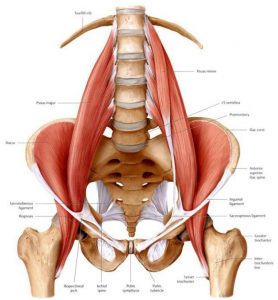

People that are more prone to hip flexor tightness:
People that have occupations that involve prolonged periods of sitting are prone to hip flexor tightness as the hips are in a sustained flexed position during sitting. People that engage in regular exercise such as running and cycling are also more prone to tight hip flexors. Sportspeople playing kicking sports such as soccer and football are also more likely to experience excessive flexor tightness as the kicking motion involves repetitive hip flexion movements.
The consequences of tight hip flexors:
Tight hip flexors can be a local source of pain around the hip joint which can be present during prolonged periods of sitting or during sporting activities that utilise the hip flexor muscles. Excessive tightness of the hip flexors can change lumbo-pelvic posture as it pulls the pelvis into an anteriorly tilted position. Increased anterior pelvic tilt increases the curve within the lumbar spine (lordosis) which in turn can cause the facet joint of the lumbar spine to be compressed more and tighten up surrounding back extensor muscles such as the erector spinae; this can lead to associated lower back pain.
Tight hip flexors and altered alignment of the pelvis can also lead to over-activity of the hip flexor muscles and altered neuromuscular activity of the gluteal and core muscles which can further be a source of hip pain.
What can we do to reduce hip flexor tightness?
Our experienced physiotherapists at Capital Physiotherapy can help to reduce hip flexor tightness and associated aches and pains through various treatment options which include:
- Massage and trigger point release
- Gluteal and core strengthening to improve lumbo-pelvic stability
- Neuromuscular training
- Stretches
What can you do to reduce hip flexor tightness?
To manage tight hip flexors stretch the hip flexors daily, try and stand up every 30-60 minutes to avoid sitting for prolonged periods.
Drop down into lunge position. Tilt pelvis backwards to activate glutes. Then lean forward at the hips, keeping the back in a neutral position. A stretch should be felt near the groin/front of the thigh. Hold for 30 seconds. Repeat up to 4 times a day. Stretch at least once a day.
If you like this video please LIKE, SUBSCRIBE, SHARE do follow us at Capital Physio Youtube Channel for more weekly updates on health related topics.
What people don’t tell you about PLANK/PUSH UP/SQUAT
Correct Exercise Technique
Correct technique is crucial to ensuring the correct muscles are recruited during specific exercises. Poor technique leads to increased risk of injuries.
Correct Squat Technique:
- Straight back
- Knees behind the toes
- Stick the bottom out
- Keep heels on the ground
Common mistakes performing squats:
- Not sticking the bottom out far enough
- Arching the lower back
- Slouching the upper back
- Knees going over the toes
- Heels coming off the ground
- Weight on the toes rather than the heels
Correct push-up technique:
- The head, back and bottom are aligned to form a straight line
- When going down towards the ground, the chest should move forwards so that it lies in front of the shoulders
- The shoulder blades should be stabilised before descending so that they don’t stick out relative to the upper back
Common mistakes performing push-ups:
- Arching the lower back
- Dropping the head down towards the ground
- Shoulder blades sticking out
- Chest going straight towards the ground rather than moving forward as the body descends
Correct plank technique:
- Head, back and glutes should be aligned to form a horizontal line
- Glutes and core should be engaged
- Shoulder blades should be in line with the upper back
Common mistakes performing planks:
- Arching the lower back
- Head/neck drop down towards the ground
- Shoulder blades sticking out
At Capital Physiotherapy, our physiotherapists can create a personalised workout program just for you. Capital Physiotherapy will tailor to individual needs and wants. We will make sure that the program is challenging yet safe to do.
5 Steps to Fixing Tennis Elbow Pain
Tennis Elbow/Lateral Epicondylitis
One of the most common causes of elbow pain is the dreaded tennis elbow or, as it’s formally known, Lateral Epicondylitis. Tennis elbow affects predominantly the wrist and finger extensors that is located on the outside part of your forearm; specifically the Extensor Carpi Radialis Brevis and Longus). These muscles originates from the small bone bump on the outside of your elbow, and attaches to different parts of your hands.
The usual cause of a tennis elbow is usually due to a repetitive movement; specifically gripping activities. This is the reason why it’s called tennis elbow, this involves gripping a racquet. However, there usually is an issue with the person’s hitting technique. A common mistake is to use wrist extension to hit the ball. Your physio at Capital Physiotherapy can assess you in this regard.
Other common ways you can get tennis elbow are: prolonged computer work (typing), home renovations (hammering, painting) as well as carrying/lifting objects. In some cases, tennis elbow may also be as a result of some neck issues, including stiffness and nerve root irritation.
As you can see, it is important that you seek professional help when you have elbow pain. Inappropriate care will result in worsening of your symptoms as well as delayed healing. This may result in you requiring corticosteroid injections.
Your physio at Capital Physiotherapy is well equipped to look after you. They will spend the time that it takes to ensure you are cared for and get the results you need. They will make sure all contributing factors are considered and assessed. A thorough assessment is required so that you receive the correct treatment to get you back to your activities quickly!
Hope that through this video, viewer can gain a better understanding on tips to help with your tennis elbow pain. If you like our video please do like, subscribe and share 🙂
Essential Stretches For Runners and Cyclists
Stretches and foam rolling to maintain muscles length is crucial to optimise performance.
When our muscles is too tight, it is impossible to contract your muscles to create force and power to run or cycle. It is vital that all cyclist and runners have a regular stretch and foam rolling routine to help keep their lower leg muscles loose and injury free.
In Capital Physiotherapy, we have created a simple and easy to follow stretch/ foam rolling routine that we gave to all our runners and cyclist clients. This routine when done on a regular basis have shown significant improvement to their performance.
Studies have shown that foam rolling after exercises can significantly increase joint range of motion and reduce muscles soreness after a intense workout.
Feeling tight is related to muscle tone, while actually being tight is related to your muscle tissues physically becoming shorter.
In this video we like to show all viewer on how to stretch all 6 muscles group that are vital for activities such as running and cycling. These muscles are mainly lower leg muscles such as the:
1) Calves muscles
2) Shin muscles
3) Quads muscles
4) IT band
5) Gluteals muscles (glute muscles)
6) Hamstring muscles
Hope that through this video, viewer can gain a better understanding on the importance of regular stretches and foam rolling to prevent potential injuries and allowing them the keep up with the activities that they love doing 🙂
Follow us at
Facebook
Stretches For The Office Warriors
Sitting for several hours a day working away at a desk can lead to adverse effects on the body. The human body is not designed to withstand seated postures for more than an hour at a time. When seated for extended periods of time, muscles around the hips, spine and legs can become tight as they are in stationary positions and not being utilised through active movements. Muscles in the wrists can also become tight if the hands and wrists are constantly being used for activities such as typing. Muscle tightness can progressively get worse over time and lead to aches and pains. These aches and pains can then result in reduced activation the muscles which can lead to reduced muscle strength and subsequent movement impairments.

It is important to manage muscle tightness in order to prevent and/or reduce associated pain and movement limitations. At Capital Physiotherapy our physiotherapists can help reduce the aches and pains in the office-worker through targeted treatment strategies. Our physiotherapists also emphasise the importance of self-management of reducing tightness through regular stretching in the workplace. Capital physiotherapy have devised a series of stretches that can be performed regularly in the workplace to reduce muscle tightness and discomfort. Our physiotherapists recommend stretching every hour or two, holding each stretch for 30 seconds.
Watch our previous Video on
5 quick and easy way to make your work station more ergonomic
If you like the video please subscribe to us and like our facebook and instagram page
By Leah Christoforou
5 Quick and Easy Ways to Improve Your Workdesk Ergonomic
Ergonomics
How posture affects the spine
In a person that sits with normal posture, the curvatures of the spine assume an “S-shape.” This allows even distribution of body weight loads throughout the spine. Over-time with prolonged sitting, the postural muscles of the back can fatigue leading to the adoption of poor posture. In a person with sitting posture the natural curvatures of the spine can become “C-shaped which leads to an abnormal distribution of body-weight loads on the spine. In particular, excessive stress is placed on the lower back, neck and upper thoracic areas which can lead to symptoms such as pain and stiffness.
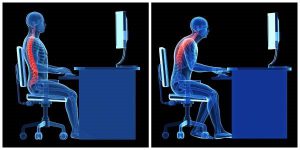
Good posture: S-shaped spine Poor posture: C-shaped spine
What is ergonomics?
Ergonomics utilises sciences such as anatomy, physiology and engineering to design tools that allow people to work more safely and comfortably in their work environments to help reduce the risk of poor health outcomes and improve performance.
How can Capital Physiotherapy implement ergonomics to help you?
Capital Physiotherapy can incorporate ergonomics into their physiotherapy assessment and treatment to help improve posture in the workplace and thus reduce symptoms associated with poor sitting posture. Our physiotherapists can provide advice about alterations to the workplace environment to improve aspects such as desk height, chair set-up and positioning of desk items to aid the adoption of good posture. At Capital physiotherapy, we can also determine which muscles and joints are affected by poor posture and provide treatment to reduce symptoms associated with muscle tightness, joint stiffness, muscle weakness and altered muscle activation.
Some of our treatments may include:
- Taping
- Massage
- Muscle activation, strengthening and stretching exercises
- Dry needling
- Hands-on manual therapy
- Education about posture
If you like this post do subscribe to on our youtube channel and follow us on instagram
Posted by Capital Physio -Leah Christoforou
Education Epi 3 – Pregnancy Back Pain (When should mother start to worry?)
Sacroiliac Joint Pain (SIJ pain) is pain felt at or near the sacroiliac joints of your pelvis as a result of sacroiliac joint dysfunction. These are joints located at the 2 dimples of the lower back. The pain often feels deep within your lower back and can occur on one or both sides of your back. In some cases, pain radiates down to the buttock and the back of the thigh.
While pain may begin at any time during pregnancy, SIJ pain on average begins in the 18th week of pregnancy and becomes more intense as the pregnancy progresses. The pain usually spontaneously resolves within 3 months post delivery. But in some cases it can become chronic and disabling.
This video will educate mother-to-be on SIJ pain, when and how it happen and what should be done to treat this issue.
For further help, please visit our main page at www.capitalphysiotherapy.com.au
If you do suffer from back pain, I highly suggest you seek professional help ASAP.
At Capital Physiotherapy, we can accurately diagnose your pain and give you tips and strategies to help make your pregnancy journey a smooth and pain-free experience.
How Does it Feel?
People with SIJ dysfunction may experience:
- Pain that may be sharp, stabbing or dull, localized to 1 side of the pelvis/low back, groin, or tailbone.
- Pain that may radiate down to the knee.
- Pain with movements, such as standing up from a sitting position, turning in bed, or bending/twisting.
- Muscle tightness and tenderness in the hip/buttock region.
- Pain with walking, standing, and prolonged sitting.
- Pain that is worse when standing and walking, and eases when sitting or lying down.
How Can a Capital Physiotherapy Help?
At Capital Physiotherapy, your physiotherapist will design a targeted treatment program based on your evaluation and your goals for a safe return to sport or daily activities. Treatment may include:
- Hands on therapy, includes soft tissue release or massage for tight and sore muscle groups. Hands on therapy are used to correct pelvic/SIJ alignment. Joint mobilizations/manual therapy uses gentle movements to improve mobility of the hip, SIJ, and low back.
- Stretches exercises. Stretching exercises may be prescribed to improve the flexibility of tight muscles. They may also help to improve movement in the spine and lower extremities, and help decrease stress at the sacroiliac joint during daily activities.
- Specific Strengthening exercises. Strengthening helps to improve the stability of the sacroiliac and spinal joints, which helps to reduce ligament strain and pain. These exercises are focused on weak muscles, including the lower abdominal, pelvic floor, and buttocks muscles.
- Taping/ Bracing. Depending on our assessment, our physiotherapist may also recommend bracing/ taping your sacroiliac joint. It is used to provide stability during daily activities as your strength returns, and flexibility improves. This modality is especially helpful for pregnant women.
All treatments prescribed by the physical therapist will be based on your specific case.
If you do like the video, do subscribe to our YouTube channel.
You Need To Watch This If You Are Suffering From Shoulder Pain
Shoulder impingement syndrome is a common cause of shoulder pain. It occurs when there is impingement of tendons or bursa in the shoulder from bones of the shoulder. Overhead activity of the shoulder, especially repeated activity, is a risk factor for shoulder impingement syndrome. Examples include: painting, lifting, swimming, tennis, and other overhead sports. Other risk factors include bone and joint abnormalities.
With impingement syndrome, pain is persistent and affects everyday activities. Motions such as reaching up behind the back or reaching up overhead to put on a coat or blouse, for example, may cause pain.
Over time, impingement syndrome can lead to inflammation of the rotator cuff tendons(tendinitis) and bursa (bursitis). If not treated appropriately, the rotator cuff tendons can start to thin and tear.
For more information, book an appointment with one of our physiotherapists for a more tailored recovery program that suits you best.
For more health and fitness update please subscribe to our YouTube channel.


 Meet Melanie Lim, a Bachelor of Physiotherapy Graduate from the University of Melbourne. She has gained a wealth of clinical experience through both public and private systems during her undergraduate studies to be here today at Capital Physiotherapy’s Hawthorn Physio clinic.
Meet Melanie Lim, a Bachelor of Physiotherapy Graduate from the University of Melbourne. She has gained a wealth of clinical experience through both public and private systems during her undergraduate studies to be here today at Capital Physiotherapy’s Hawthorn Physio clinic.